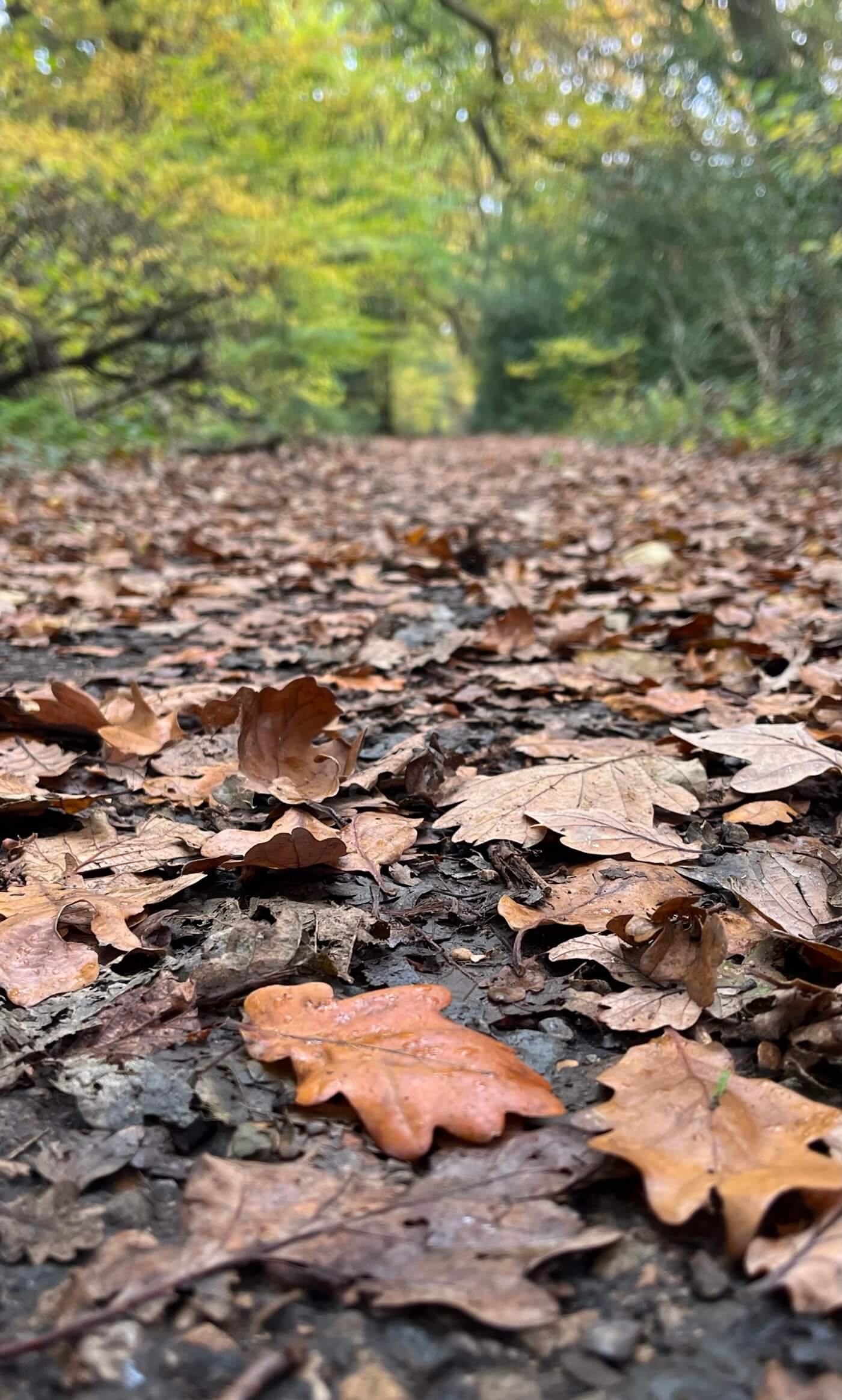Autumn well-being: How to nurture your Mental Health this season
Autumn self-care & well-being
As the leaves transform their hues and the air turns crisp, we may notice a shift in our mood. The change in daylight and the allure of cosy indoor spaces can mean a departure from our summer routine. For many, it can pose a challenge when it comes to maintaining our overall sense of well-being.
Autumn, is often considered a season of change and release, both in nature and potentially in our own lives. The cycles of nature may offer us valuable insights to those who tune into its metaphorical messages.
In this article, I delve into strategies for embracing this captivating but sometimes challenging season.
Appreciating Nature's Colours
Autumn is renowned for its breathtaking array of colours. The trees shed their green summer attire and don vibrant hues of red, orange, and yellow.
While cooler temperatures make getting outdoors less enticing, taking a stroll amidst autumn’s beauty can serve as a way to enhance mood and reduce stress. The rich colours and inherent beauty can inspire a sense of wonder and appreciation for the world around us. Leisurely walks through parks and woodlands offer moments of tranquillity and a reconnection with nature, providing a respite from the daily grind.
If outdoor excursions aren’t feasible, you can still foster a connection with nature by adorning your space with autumnal pictures or creating displays featuring seasonal items like pumpkins, pine cones or chestnuts.
Mindful Awareness and Transition
Autumn encapsulates the essence of change and release. Much like the leaves gracefully falling to the ground, we can view this season as an opportunity to shed what no longer serves us.
Incorporating mindfulness practices or journaling into our routine allows us to attune ourselves to our thoughts and emotions. This mindful awareness assists us to recognise and release any negativity or stress, shedding light on areas in our lives where help may be needed.
Observing and connecting with nature's transitions can serve as a symbolic reminder that change is a natural and indispensable part of life. It prompts us to acknowledge that personal growth and transformation often require making changes.
Cozy Comforts and Self-Care
The cooler temperatures of autumn serve as an invitation to embrace cosy comforts. Picture yourself wrapped in a thick blanket, savouring your favourite warm beverage, and spending quality time with loved ones or a good book. Engaging in comforting activities often nurtures a sense of safety and contentment.
Engaging in self-care rituals, whether it's listening to soothing music, practising meditation, or immersing yourself in a creative project, can be particularly beneficial during the transition from summer to autumn. Regardless of the season, allocating time for nurturing activities, even if just five minutes at a time, has the potential to contribute significantly to overall well-being.
Seasonal Foods and Nutrition
Autumn brings with it a delicious range of seasonal produce, including pumpkins, apples, and squash. Part of self-care is ensuring we get adequate nutrition and hydration.
I find there is nothing like a warm bowl of pumpkin soup after a refreshing autumnal walk.
Cooking and consuming seasonal ingredients is one way to feel connected to the seasons.
You might want to gather with friends or family to share seasonal goods, such as a spiced pumpkin late, snacks or a meal. Maintaining social connections through the seasons is important for our well-being. Feeling isolated and lonely can have a major impact on mental health.
Building Routine and Structure
Autumn may cause changes to the routine you had in the summer. Autumn coincides with the start of a new school year or the end of summer vacations. Shorter daylight hours may alter your motivation to exercise or impact your sleep pattern.
If you find your routine shaken, you may want to take this opportunity to reestablish or recreate it. Having a routine can encourage a sense of stability and help us manage our time more effectively.
Here are some tips to consider when it comes to creating a routine:
Going to bed and waking at the same time if possible. Even on a weekend;
Including self-care activities every day. I appreciate life can be busy with sometimes competing commitments. However, if it’s a choice of taking just five minutes or ploughing on, the former is the option I’d encourage you to choose. You might be surprised how even short daily bursts of self-care may help you to refocus or feel calmer.
Try to get some exposure to natural daylight. Natural light, especially in the morning, is thought to help improve sleep, wakefulness and mood. Consider standing or sitting by a window, taking a morning or lunchtime walk, or spending a few minutes just outside breathing in fresh air.
Final Thoughts
Autumn is full of symbolism, inspiration and beauty. A reminder that in nature nothing remains static. That sometimes we may need to make changes to improve our well-being.
There are many ways to connect with this season. Some of these include woodland walks, cooking with seasonal produce or making an autumn bouquet.
Seasonal changes have the potential to impact our emotions, energy or sleep. Autumn offers us a reminder to take action to nurture our well-being. This could include getting more natural light, reestablishing helpful routines, or journaling by a warm fire.
By embracing and connecting with autumn you may find solace to see you through this season and beyond.
Other Resources
Got the Winter blues? - What is it, how to manage it ;
Do your self-care needs change with the seasons? - How our self-care needs may change. Includes reflective questions and self-care ideas;
BBC Good Food offers some tasty autumn recipes.
Counselling
If you find yourself struggling this autumn you might find counselling helpful.



